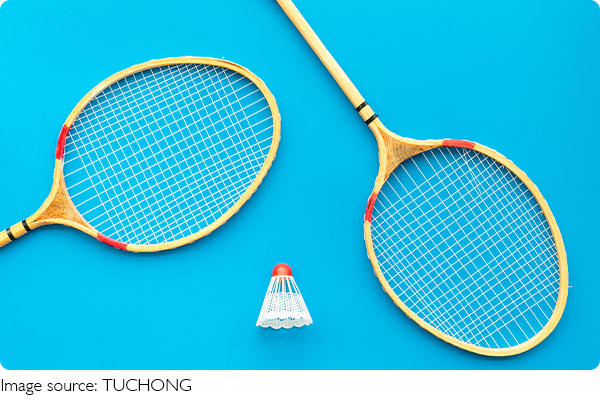String a Badminton Racket

In badminton, the performance of the racket directly affects a player's performance. Stringing the racket, as one of the key factors influencing its performance, is often overlooked by many amateur enthusiasts.
So, how exactly should you string a badminton racket? This article will provide a detailed analysis of the entire process of stringing a badminton racket and reveal some professional tips.
Preparation Before Stringing a Badminton Racket
Choosing the Right String Material
When selecting badminton racket string material, consider factors such as the material's composition, elasticity, and durability.
Common string materials include BG65, BG65Ti, and NBG95, each with its own characteristics and suitable for players of different skill levels. You should choose the right string material based on your technical strengths and needs.
Inspecting the Racket
Before stringing, carefully inspect the racket frame and shaft for any cracks or damage. Ensure that the head and shaft are tightly connected to avoid issues during the stringing process.
Preparing Stringing Tools
Stringing tools include a stringing machine, string clamps, scissors, etc. Make sure these tools are in good condition to successfully complete the stringing job.

Steps to String a Badminton Racket
Determine the Stringing Pattern
There are two main stringing patterns for badminton rackets: cross-stringing and straight-stringing. Cross-stringing provides better control and elasticity, while straight-stringing is more durable.
Choose the appropriate stringing pattern based on your personal preference and racket characteristics.
Start Stringing
- Step 1: Secure one end of the string in the string clamp of the stringing machine, then begin stringing from the top of the racket head. Maintain even tension in the string.
- Step 2: Follow the chosen stringing pattern and thread the string through the various holes in the racket frame. When cross-stringing, ensure that the string intersections are tightly fitted to avoid looseness.
- Step 3: Regularly check the tension of the string during the stringing process to ensure consistent tension across the entire racket face. If you find the tension is insufficient or the string is loose, adjust it promptly.
- Step 4: After the string has passed through the last hole, secure it at the other end of the stringing machine. Then, use scissors to trim the excess string, ensuring a neat racket face.
Inspection and Adjustment
After completing the stringing, carefully inspect the entire racket face to ensure the strings are flat and the tension is even. Make any necessary adjustments to ensure optimal performance.
Stringing Tips for Badminton Rackets
- Tip 1: During the stringing process, you can adjust the string tension to suit different hitting needs. For example, you can increase the tension in the sweet spot of the racket head to improve control, while reducing the tension at the edges of the frame to enhance durability.

- Tip 2: To extend the life of the racket, avoid pulling the string too tight during stringing. Over-tightened strings can easily cause the racket frame to deform or crack.
- Tip 3: When choosing a stringing machine, consider its precision and stability. A high-quality stringing machine ensures more even string tension, thereby improving the performance of the racket.
Questions and Discussion
Have you encountered any problems during the stringing process of a badminton racket? For example, difficulties in choosing string material, confusion about stringing patterns, or performance adjustments after stringing? Feel free to leave a comment and share your experiences and insights. Let's discuss together how to better string a badminton racket!

 · Sport Team
· Sport Team